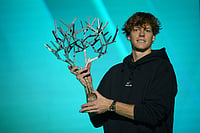Advertising has lost its sheen’. ‘The ad agency model is dead.’ These are judgements that sound the death knell of this industry and it’s perhaps time to step back and view the big picture. What do we call advertising and what exactly is dying—the 30-second TV commercial? The print ad? The mega size hoarding, the radio spot, the banner ads, the 3-minute short film that goes ‘viral’, the brand placement in movies, the curated and sponsored shows, the crowd-sourced content? If all this strikes you as the limit of advertising, then let’s understand the shifting sands of our times and the industry a little better.
The need to communicate gained further impetus when coupled with the need to sell. A few decades back, a famous poet by the name of Naseer Akbarabadi wrote poems for street vendors selling their wares. They would be probably called jingles in today’s times. The strategising, planning, targeting, creating a loyal customer base, even freebies (think of the dhania-mirchi combo) has been part of our lives. There were event marketing and experiential marketing as well—the street tamashas and plays; the acrobats were ‘entertainment content’ to attract attention so people would sample products. New media or inventions ranging from loudspeakers to mikes or then radio came in to change the mode, medium and content of marketing communication.
The Indian ad industry began to develop in the ’60s and rode the wave from local practices to print, radio and went to the advent of the audio-visual. Agencies reeled under the changes. From film production and technology to ideating and writing for an audio-visual format, they have had to redefine themselves and their departments vastly—and the 30-seconders have ruled.
It’s clear then that as an unorganised sector, advertising has been around for ages. The organised ‘advertising agency’ format is what we borrowed from the West and this purely so because they became industrialised earlier and product marketing in a structured fashion found its origin there. Now that the history is out of the way, back to the future which is taking place as we speak: a taxi app opens with a notification for the taxi at the estimated time, coupled with mall and restaurant options nearby. It’s the age of predictive computing right now. The new platforms and social media tools as a form and delivery mechanism are redefining how we consume. The clients are younger, savvier and the ad-free content commands a premium, the attention spans measured in nanoseconds. ‘Real-time content consumption’ (as Snapchat reflects) is where the market is at.
The entire ecosystem around us is evolving. The products, the marketing, the delivery systems all are experiencing change. Tech now has to be in the DNA. It is but natural that advertising and ad companies in their current and previous form will morph to be in sync with the times.
There will be a big idea and several smaller ideas: a more collaborative model with designers to data scientists is coming together. The brand managers and marketing managers have begun to work with this new model—it’s refreshing, it’s fun and there are great things to learn and experiment with. But it can (and in some cases already is) getting diluted. To thrive in chaos is an art. A talented professional’s job is to see diverse threads and weave them into a cohesive brand fabric to build a narrative. And an agency lives and breathes the brand it helps create. There is a brand ownership, which goes beyond a one-off idea. Once the dust settles, those who have the custody of the brand and steer it through the waters of engagement, crisis management and advocacy are the ones in demand. This is what good advertising companies are—solid partners in creating brands that evolve with consumer needs.
Of course, the really fun bit is that this is all work in progress—new methods are being brainstormed as I write this. And what market can better understand and embrace the aspect of change, of various incarnations, better than India? Exciting times, these.
(Lyricist, screenwriter and ad man Prasoon Joshi is CEO, McCann World group India)
Slide Show
The first newspaper adverts in India were carried by Hickey’s Bengal Gazette, a daily printed in Calcutta that was founded by James Augustus Hickey in 1780—India’s first major newspaper.


























